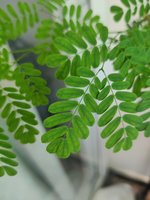I'm a beginner & got a Brazilian Rain Tree couple of months ago. Growth is really vigorous & the plant is my balcony with indirect sunlight (through shade net as direct sunlight may scorch the leaves due to the tropic climate). I've been feeding NPK fertilizer once 15 days & water whenever soil is about to dry. Despite all, the new growth seems to have some kind of nutrient deficiency where the veins are visible which I suspect might be due to Iron Chlorosis... Since I'm new to BRT, any suggestion/solution from experts or anyone who has faced this would be really valuable. Thank you in advance


